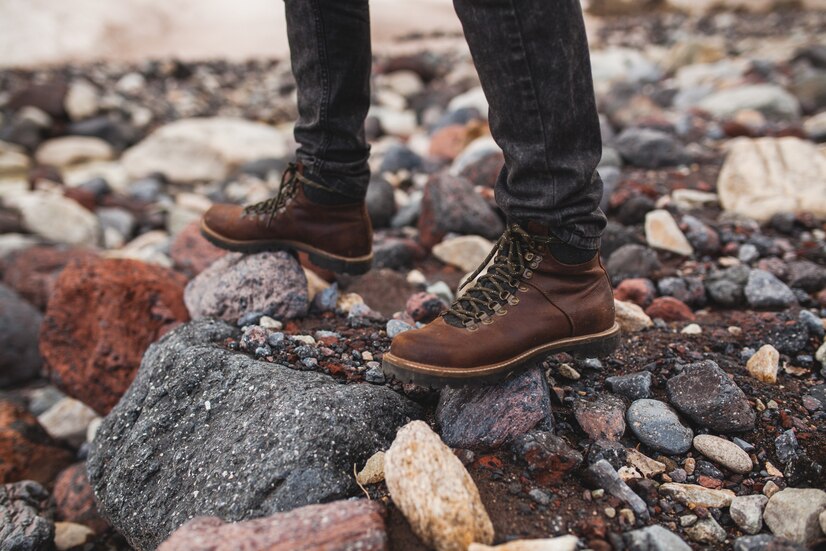In a hiking culture that wears dirt as a badge of honor, shoes, and boots need regular cleaning to maintain longevity. Dirt and mud infiltrate vulnerable threading, reduce the breathable surface of footwear, and speed up the breakdown of materials.
Maintaining your equipment correctly can increase its lifespan and strengthen your bond with outdoor activities.
Inspect & Clean
Whether hiking for fun or fitness, having the right shoes is critical. For long-distance hikes, you will need durable footwear that supports your feet and offers traction to handle the terrain. For shorter hikes, a shoe with an excellent lacing system is essential to keep the heel locked and prevent your foot from sliding up and down inside the shoe (a common cause of blisters). Brands like Hoka One One offer a range of footwear options designed to meet these specific requirements, ensuring you have the right companion for your hiking endeavors, regardless of the distance.
Hiking boots should be cleaned after each outing. A simple cleaning routine will protect your shoes from dirt, grime, and odors and extend their life and functionality.
Start with a thorough inspection. Use your hands to feel around the outside of the shoe for rough spots and seams, particularly the sole. It may be time to consider resoling if the soles are worn down or cracked.
Thoroughly clean the shoe or boot exterior using a brush, soapy water, or cleaning gel. Work into every crease and fold of the fabric, including the inside of the shoe or boot. Ensure that you get into areas like the lacing eyelets and tongue. Once thoroughly cleaned, rinse off the excess soap. Please make sure the shoes are thoroughly dry before putting them back on. Drying them near a fan or an open vent will help speed up the process.
Waterproof
Most hikers appreciate waterproof footwear when the weather calls for it. They help to keep the feet dry and comfortable and prevent discomfort from walking in slushy rain or standing in deep puddles. While some ultra-versatile hiking boots excel in almost everything, most outdoor people quickly admit that no shoe is 100% waterproof. Even waterproof shoes can be impacted by rocks and sticks, mud, and many other debris that make their way into the bottom of the shoe.
To protect the waterproof membrane of the shoe, a waterproofing product should be applied to the exterior of the footwear before each use. This is a simple process. First, the shoe must be cleaned thoroughly, and any coarse dirt should be brushed away. Next, the shoes should be dried entirely before beginning the impregnation process.
A waterproof spray can be applied with a clean cloth for nubuck, suede, or synthetic fabric shoes. A wax can be rubbed in for smooth leather shoes. Then, the boots can be left to dry in a well-ventilated area. It is recommended that hiking shoes be re-impregnated at least once per season, but a hiker might choose to do so more often for best results.
Condition
Most hiking footwear is constructed from technical and waterproof materials, like leather or synthetics. When these fabrics get grubby and sweaty, breathability is compromised, and waterproofing is degraded. Maintaining clean shoes helps to restore these features and increases the life of your favorite hiking or trail running boots.
After you’ve brushed off loose dirt and debris and washed your shoes with soap or cleaning gel:
- Use a soft-bristle brush to scrub the outside of each shoe, including the sole.
- Focus on seams, overlays, and lace eyelets, where dirt buildup can be particularly stubborn. If you’re battling, especially gnarly grime, leave your shoes fully submerged in a bucket of water to soak for 10-15 minutes.
- Rinse thoroughly and let them dry in a ventilated area away from sunlight or heat sources.
A worn sole affects your stability and is a real pain in the butt when you’re out for an extended hike. If you’ve noticed that your soles are wearing down, take them to a shoe repair shop for resoling. You’ll save yourself money in the long run by not having to buy a new pair of hiking shoes, and you’ll still have your trusted gear for future adventures.
Store
Keeping your hiking shoes clean is not only suitable for their appearance, but it also helps them last longer. When dirt penetrates the fabric, it accelerates the mechanical wear of the fibers. And once that mud dries, it forms a hard crust over the shoe’s surface, weakening it at the creases.
When your boots are dirty, they also don’t breathe as well, which reduces their waterproofing and can lead to odor and mildew. So, cleaning your footwear should be on your list after every hike.
A quick spot clean is often all your shoes need to look and feel fresh again. Begin by brushing off as much dirt and debris as possible from the outside with a soft-bristled shoebrush or rag. Then, gently clean the dirtier areas of your footwear using a mild soap or specialized cleaner (recommended for your shoe material). Pay special attention to folds, overlays, and laces.
After cleaning, it’s essential to store your hiking shoes properly. Please store them from direct sunlight and heat since these elements can degrade adhesives, damage fabrics, and melt rubber compounds. Instead, store them in a cool, dry place. To help your footwear retain shape, consider investing in inexpensive shoe trees to hold them in place as they dry.











